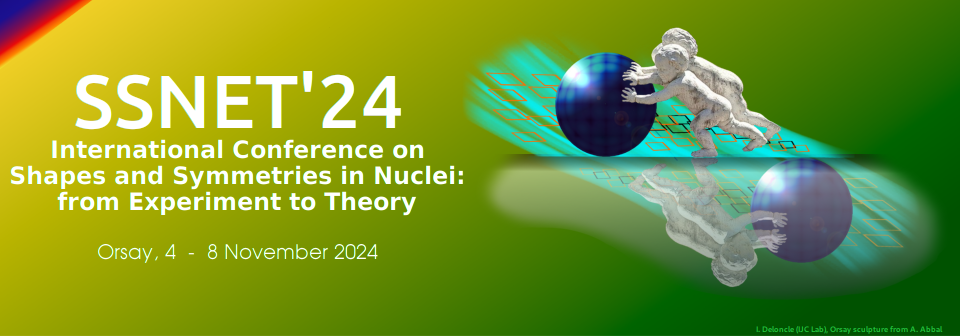Orateur
Description
Recently, high-energy nuclear collisions have been proposed as a powerful tool to image the global structure of heavy atomic nuclei, such as their shapes and radial profiles. We present the first quantitative demonstration of this method by extracting the quadruple deformation and triaxiality for the U238 nucleus known for its large prolate shape. We achieve this by comparing several flow observables in collisions of U with collisions of near-spherical Au. Though the extraction of U is consistent with low-energy experiments, the measurements indicate a non-zero triaxiality of U238 in its ground state. A similar comparative measurement is carried out in collisions of Ru96 and Zr96. Large differences are observed in almost all flow observables in the two collision systems, reflecting strong impacts from the structure differences between the pair of isobars. In particular, our measurements suggest an intriguing octupole deformation in Zr96 which is not predicted by mean field model calculations, as well as a larger neutron skin in Zr96. We also firstly studied the light nuclue O16 structure in the high energy collisions, compared to the ab initio calculations. The prospect of the imaging method for studying nuclear structure is also discussed.

